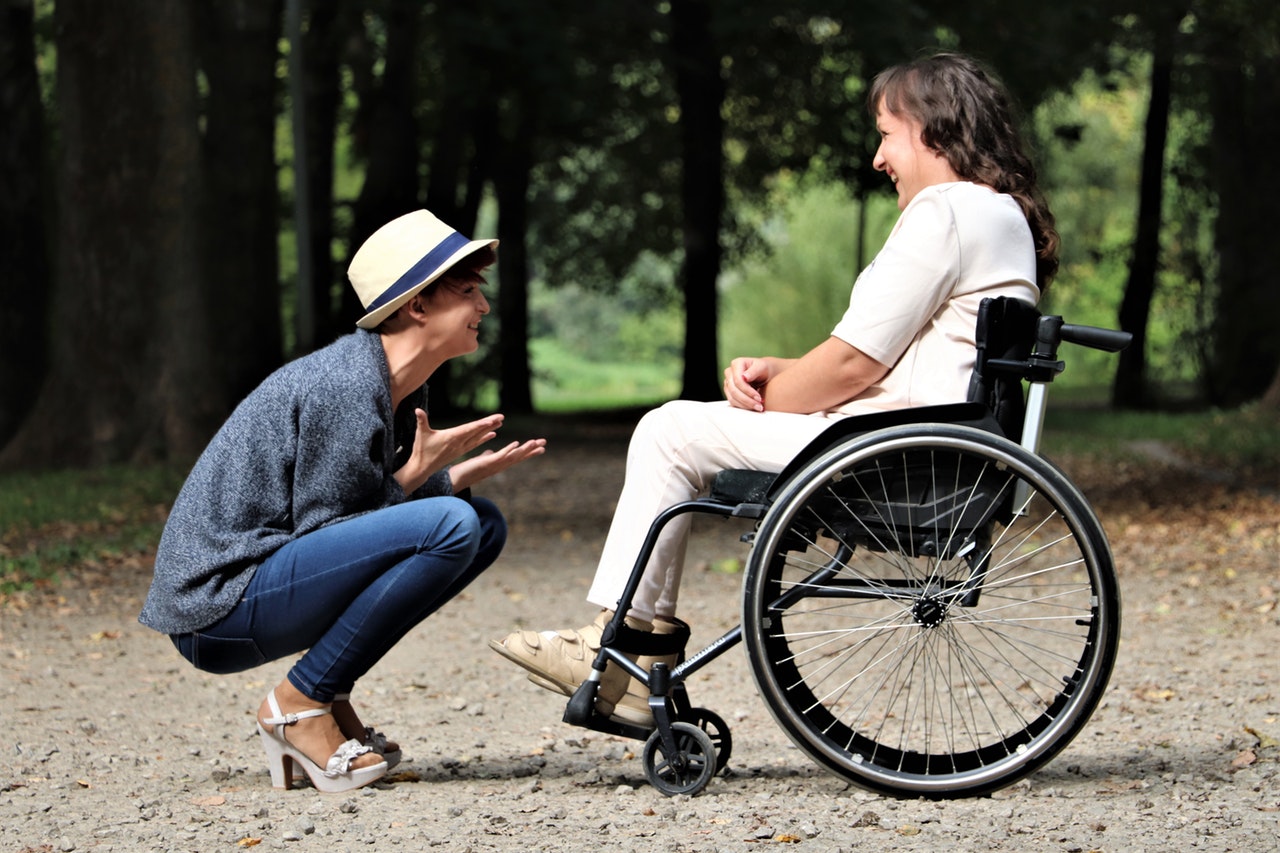Disability Etiquette: How to Respect People with Disabilities
People who have never interacted with a person who has a mental or physical disability may think of the exchange as intimidating or nerve-wracking. They might worry what to talk about or how to avoid staring. These concerns are understandable, but it’s important to realize people with disabilities should be treated the same as everyone else.
The most important part of interacting with someone who has a disability is seeing that person for whom he or she is, and not what disability that person has. What it boils down to is having a sense of disability awareness and disability etiquette. And to help raise awareness Vantage Mobility has created some useful tips to remember:
Find commonalities before thinking about differences. Common ground is the base of all human connections; once you’ve found something in common, then you can deal with the differences. For example, a person in a wheelchair may use a wheelchair lift and hand controls to transport into a car and drive. Rather than thinking about how you and this person drive differently, focus on the commonality: both of you drive. In this instance, the difference doesn’t matter.
Do not victimize people with disabilities. Referring to someone as a “spinal cord injury victim,” or “cerebral palsy victim,” takes away that person’s power. It abdicates them of their strength and ability to overcome because the emphasis is on what happened to them, as opposed to what they did about it. It would be more appropriate to refer to someone with a disability as a “survivor.”
Don’t assume they see their disability as a tragedy. Many people with disabilities have worked through the tough emotions to be happy and content with their lives. A seemingly harmless statement like, “I’m so sorry that happened to you,” or something of that nature can make a person with a disability feel sad and sorry.
Adjust posture to be eye-level. The height difference between people in wheelchairs and able-bodies can create an unspoken feeling of superiority and inferiority. To be safe, sit or stand at eye-level with the person who has a disability when it is appropriate and possible. Finding a table to sit at is a great option because it can eliminate any visible differences, such as a wheelchair. Sitting in a chair (with or without a table) is also better than kneeling, which may cause the person in a wheelchair to feel like a child.
Make eye contact; never avoid someone with a disability. People who fear they could do or say something unintentionally disrespectful toward a person with a disability will sometimes default to ignoring that person altogether. Never do this. People with disabilities are human, and their existence deserves acknowledgement. Any human would feel terrible being ignored; it’s never the right choice.
Ask if he or she needs assistance before providing it. Don’t try to accommodate every last need of someone with a disability in attempts to be respectful. The better choice is to ask, “Is there anything I can help you with?” or, “Do you want me to get the door?” Helping before asking implies he or she is incapable and can offend the person, especially if they’ve worked hard to be able to care for themselves.
Do not underestimate the abilities of someone with a disability. Many people with disabilities are capable of caring for themselves without any assistance. They’ve spent a long time adjusting to a different way of life – be it purchasing wheelchair accessible vehicles for transportation, calling ahead to make sure a restaurant is wheelchair accessible, installing tile in their homes to avoid wheelchair friction on carpet, etc. They understand what they’re capable of and what their limitations are, so don’t worry about taking care of them.
Seek to understand the person and his or her disability before expecting to be understood. There may be times when you try your best to be respectful of a person with a disability and it backfires. You may be perceived incorrectly or perhaps offend someone unintentionally. Before getting angry and thinking, “They should understand I wasn’t trying to be rude,” step back from the situation and understand there could be many contributing factors to why that person got upset.
Speak to the person before his or her caregiver. Someone with a distorted figure or speech impediment as a result of a physical disability is often ignored because people assume he or she has a mental disability and won’t understand. Always speak to the person with a disability before approaching the caregiver; it’s the respectful thing to do. By approaching the caregiver first, the person with the disability assumes you see him or her as unequal or incapable; it damages the relationship immediately.
Be cautious of using outdated, offensive terms. Words like “handicapped” or “wheelchair bound” are not acceptable terms to use today. Many wheelchair users don’t like the word “bound” because of its negative connotation, meaning they’re tied down to the chair. Wheelchairs allow freedom and mobility. “Wheelchair accessible” is the more appropriate term to use. Handicapped is a broad and general term that many people think implies a helplessness. Disabled is more appropriate.
The number one thing to remember is to treat someone with a disability how you would want to be treated. Everyone appreciates respect and etiquette, not just people with disabilities.


